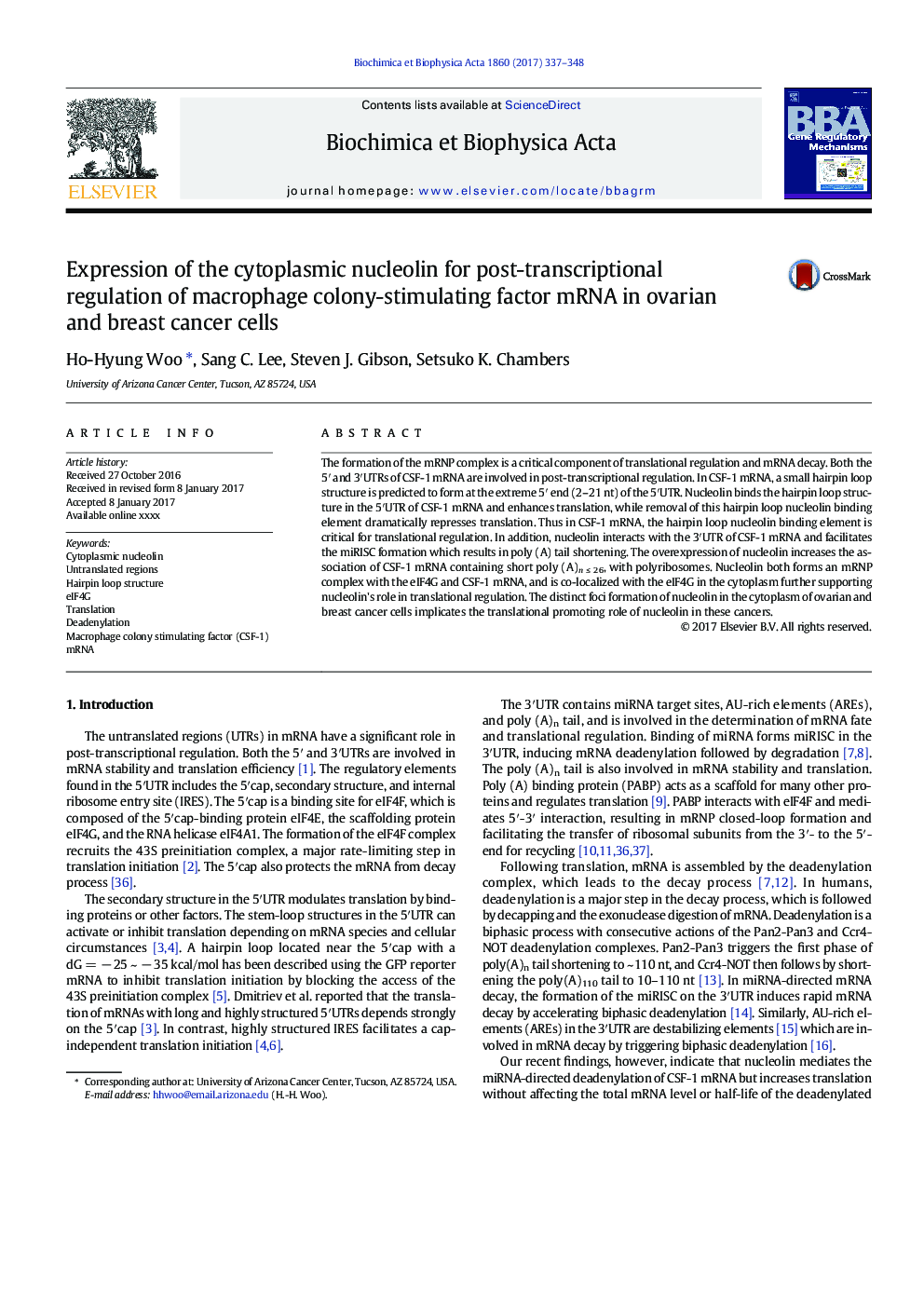| Article ID | Journal | Published Year | Pages | File Type |
|---|---|---|---|---|
| 5507701 | Biochimica et Biophysica Acta (BBA) - Gene Regulatory Mechanisms | 2017 | 12 Pages |
Abstract
The formation of the mRNP complex is a critical component of translational regulation and mRNA decay. Both the 5â² and 3â²UTRs of CSF-1 mRNA are involved in post-transcriptional regulation. In CSF-1 mRNA, a small hairpin loop structure is predicted to form at the extreme 5â² end (2-21 nt) of the 5â²UTR. Nucleolin binds the hairpin loop structure in the 5â²UTR of CSF-1 mRNA and enhances translation, while removal of this hairpin loop nucleolin binding element dramatically represses translation. Thus in CSF-1 mRNA, the hairpin loop nucleolin binding element is critical for translational regulation. In addition, nucleolin interacts with the 3â²UTR of CSF-1 mRNA and facilitates the miRISC formation which results in poly (A) tail shortening. The overexpression of nucleolin increases the association of CSF-1 mRNA containing short poly (A)n â¤Â 26, with polyribosomes. Nucleolin both forms an mRNP complex with the eIF4G and CSF-1 mRNA, and is co-localized with the eIF4G in the cytoplasm further supporting nucleolin's role in translational regulation. The distinct foci formation of nucleolin in the cytoplasm of ovarian and breast cancer cells implicates the translational promoting role of nucleolin in these cancers.
Related Topics
Life Sciences
Biochemistry, Genetics and Molecular Biology
Biochemistry
Authors
Ho-Hyung Woo, Sang C. Lee, Steven J. Gibson, Setsuko K. Chambers,
